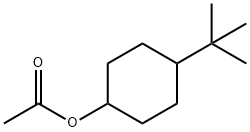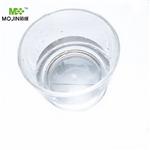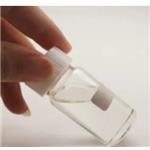Chemical Properties
4-tert-Butylcyclohexyl acetate exists in cis and trans forms.The trans-isomer has a rich, woody odor, while the
odor of the cis-isomer is more intense and more floral. Considerable variations
in cis–trans ratios in commercial mixtures have little effect on the physical
constants. Therefore, the composition of mixtures should be determined by gas
chromatography.
The ester is prepared by catalytic hydrogenation of 4-tert-butylphenol followed
by acetylation of the resulting 4-tert-butylcyclohexanol [291]. If Raney nickel
is used as the catalyst, a high percentage of the trans-isomer is obtained. A
rhodium–carbon catalyst yields a high percentage of the cis-isomer. The trans
alcohol can be isomerized by alkaline catalysts; the cis-alcohol with a lower
boiling point is then removed continuously fromthe mixture by distillation.
4-tert-Butylcyclohexyl acetate is used particularly in soap perfumes.
Uses
4-
tert-Butylcyclohexyl acetate may be used in the preparation of high loading fragrance encapsulation based on polymer-blend of ethylcellulose, hydroxypropyl methylcellulose and poly(vinyl alcohol).
Definition
ChEBI: 4-tert-Butylcyclohexyl acetate is a carboxylic ester.
General Description
4-
tert-Butylcyclohexyl acetate has been evaluated as a fragrance ingredient and its toxicologic and dermatological analysis has been reported.
Cis and
trans forms of 4-
tert-butylcyclohexyl acetate are widely used as a perfume for cosmetics including soaps.
Flammability and Explosibility
Not classified
Trade name
Lorysia® (Firmenich), Vertenex® (IFF).





